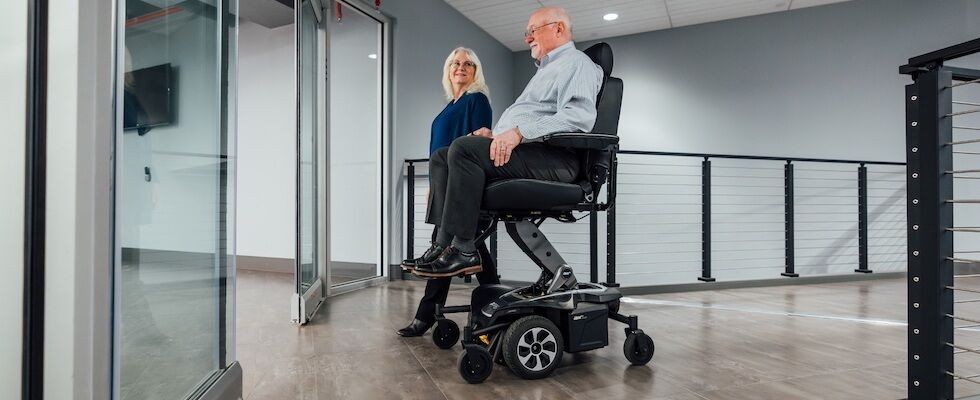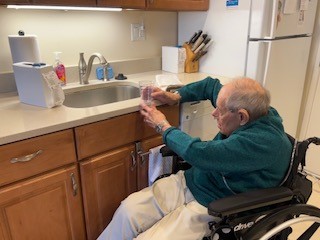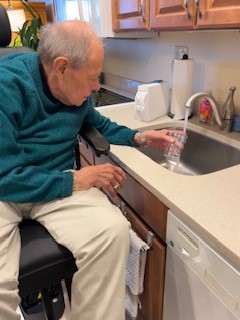
The Centers for Medicare & Medicaid Services (CMS) deemed power seat elevation equipment used on power wheelchairs to be a covered benefit for dates of service on or after May 16, 2023. This presents a significant opportunity for the senior population—which is growing at the rate of 10,000 per day—and the durable medical equipment (DME) providers who serve them.
Coverage Criteria
The first key to success in the provision of a power seat elevation system on a standard power wheelchair is to understand and embrace the new coverage criteria, which require:
- The individual must have undergone a specialty evaluation confirming their ability to safely operate seat elevation equipment in the home. This evaluation must be performed by a licensed/certified medical professional such as a physical therapist, occupational therapist or other practitioner who has specific training and experience in rehabilitation wheelchair evaluations; and,
- At least one of the following must be true:
- The individual performs weight-bearing transfers to and/or from the power wheelchair while in the home, using either their upper extremities during a non-level (uneven) sitting transfer and/or their lower extremities during a sit-to-stand transfer. Transfers may be accomplished with or without caregiver assistance and/or the use of assistive equipment (e.g., sliding board, cane, crutch, walker, etc.)
- The individual requires a non-weight-bearing transfer (e.g., a dependent transfer) to or from the power wheelchair while in the home. Transfers may be accomplished with or without a floor or mounted lift
- The individual performs reaching from the power wheelchair to complete one or more mobility-related activities of daily living (MRADLs) such as toileting, feeding, dressing, grooming and bathing in customary locations within the home. MRADLs may be accomplished with or without caregiver assistance and/or the use of assistive equipment
Seeking Solutions
The second key to success is implementing the algorithmic approach to mobility assistive equipment (MAE). The physician or a clinician needs to consider, try or rule out a gait aid (cane, crutches or walker) as a device that will provide safe, timely and independent mobility. Clients who have experienced falls when using a gait aid are typically no longer considered independent with the device because they should have someone with them who is ready to help (stand-by assistance or contact guard) mitigate the fall and minimize the risk for injury when they walk.
For many of our clients with chronic medical conditions, attempts to self-propel an “optimally configured” manual wheelchair (MWC) can create an adverse physiologic response such as a drop in oxygen saturation, the escalation of heart rate or blood pressure, or an increase in pain, that makes it an unsafe option. For some, a scooter may be considered to minimize exertion and pain, but it is only a viable option if the client can independently transfer to and from the scooter every time they use it; if they can sit in and operate it without a cushion, back or any postural support components; and if their home environment supports the use of a scooter. Often one or more of these parameters cannot be met, which leads to the consideration of a standard power wheelchair (PWC) as the safest, most timely and independent option for our clients.
Observation Powers
The third key to success is to be a good first-class noticer (and help others do the same). I’d like you to meet my dad, Jerry. He is an 84-year-old man with significant osteoporosis and a non-reducible kypho-scoliosis that has resulted in respiratory compromise and the use of oxygen as needed. He also has a low heart rate and low blood pressure, which resulted in a pacemaker being implanted in August 2023. Prior to that, he fell three to five times a day standing up from a chair or walking with his walker. As a result, he broke several ribs and each arm separately, had numerous cuts and bruises and made multiple trips to the emergency department with several overnight stays. With the pacemaker and supplemental oxygen, he falls less frequently but is no longer independent, as his standing balance is precarious at best, resulting in the need for someone to always walk with him.
To allow my dad and my mom—who has dementia that is progressing—to remain together in their independent living apartment, he has a power lift recliner (PLR), a manual wheelchair configured so he can self-propel short distances with his feet and his two-wheeled walker. They also have help from a personal care assistant (PCA) 20 hours a day. This seemed like a great set-up, but my father, near tears, told me, “I have absolutely no control over any aspect of my life anymore—I can’t even get a cup of coffee by myself.” What I failed to do was be a good first-class noticer for my own father.

We talked about whether a PWC with a power seat elevation (PSE) system might give him back the independence he has lost over the last year as I asked him the following questions:
- Do you have difficulty or need assistance to transfer to/from surfaces such as your bed, toilet, shower chair from your wheelchair? The answer is yes.
- Do you have difficulty or need assistance to reach high enough to access one or more of the following areas of your home: dresser drawers, clothes rods, washer/dryer, medicine cabinet, refrigerator/freezer, oven/stove, microwave, cupboards/shelves, counter, sink/faucet, light switches, thermostat, etc.? The answer is yes.
However, when I asked if he thought a PWC with a power seat that elevates 12 inches and allows him to move at walking speed in an elevated position would help, he was highly skeptical. He felt so defeated by his reliance on others in every single aspect of his day that he just could not envision it.
On Jan. 31, I spent the day with my dad observing the struggles he was having first-hand, which was eye-opening for both of us, and on Feb. 7 he agreed to give the Jazzy Air MED a try.

Finding Success
My dad has no problem standing up from his PLR, but once he is standing his PCA, Ellen, has to walk with him. In his MWC, he struggles to get around the apartment, and he cannot stand to transfer from it without assistance due to the low seat height. In the PWC, my dad is independent in moving about the apartment and their senior living complex. With the seat fully elevated, he can stand and transfer to his bed, the toilet and back to his PLR independently using the walker.
While the power wheelchair provides my dad with independent movement to and from the customary locations where dressing, feeding and grooming take place, the PSE system gives him access to the vertical environment to perform his activities of daily living (ADLs) independently.
For example—dressing is more than putting on a shirt and pants while in the bedroom. It includes retrieving one’s clothing from the dresser and/or closet, washing and drying them periodically in the laundry room and putting them away once laundered. In his MWC, my dad can throw the clothes into the washing machine, but he is not able to turn it on or get laundered clothes out, even if he could activate it.

However, with the seat elevated 12 inches, my dad is able to complete all steps necessary to wash and dry, fold and put away his and my mom’s clothes.
“I can’t believe what a difference 12 inches makes—I can get my own snacks,” he said.
He can also reach to make a cup of coffee whenever he wants one, heat up food in the microwave that is over the stove, take his pills on time and shave without wondering if he missed a spot.
For my dad, the PSE system doubles the functionality of the power wheelchair that is medically necessary to provide safe, timely and independent mobility. Could it do the same for your clients?
